Your cart is currently empty!
What is a Slab in Ceramics? – The Humble Clay Slab
Published:
Last Updated:
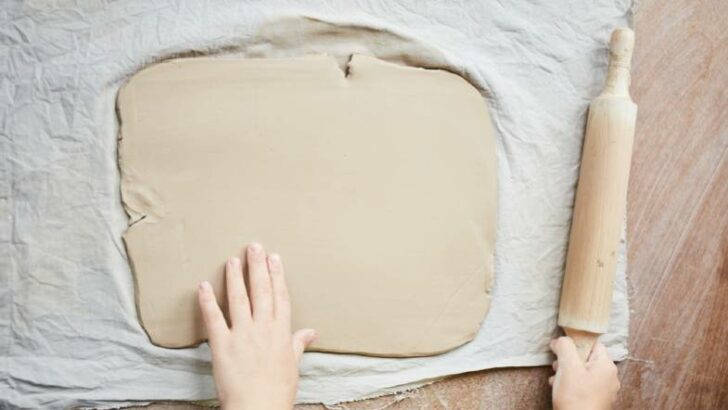
Affiliate Disclaimer
As an affiliate, we may earn a commission from qualifying purchases. We get commissions for purchases made through links on this website from Amazon and other third parties.
If you’re reading this article, you’ve probably heard the term ‘clay slab’ being used and wondered exactly what it meant. So, what is a slab in ceramics?
A clay slab is a portion of clay that has been flattened into a sheet. Clay slabs are most often made by using a rolling pin or a slab roller. Usually, the slab will have an even thickness throughout, and it can be used for hand-building pottery, known as slab pottery.
That is a broad brushstroke definition of a clay slab. But there is more to the humble clay slab than meets the eye. So, let’s take a closer look at some features of the clay slab that are important.
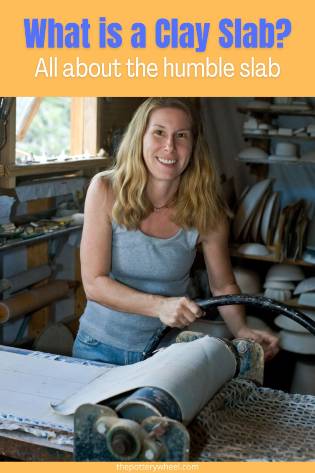
What is a Clay Slab?
There are different ways of hand building pottery, without using a pottery wheel. The main ways to hand build are pinching, coiling, and slab building.
Slab building with clay involves working with sheets of clay that can be folded, curved, and joined to make different forms. Slabs of clay can be used to make anything from plates to teapots.
However, you are making your pottery, you will start out with a chunk of clay that is fairly rough and unformed.
A slab is a lovely smooth looking sheet that can be shaped into whatever form you like. So, how do you transform a ball of clay into a nice smooth slab?
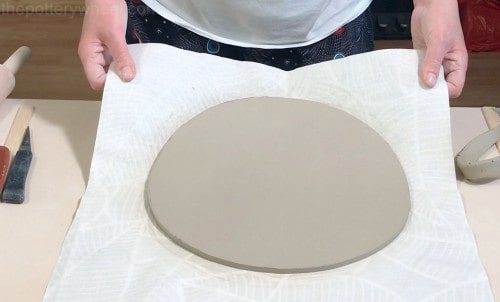
How to Make a Clay Slab
There are a few ways to make a clay slab. These are the most popular options:
Method 1 – Rolling the Clay
This approach involves rolling out the slab of clay on a non-stick, porous surface like a sheet of canvas. The clay slab is rolled out using a rolling pin.
Method 2 – Slicing the Clay
An alternative way to make a clay slab is to slice the clay into slabs using a bow harp.
This is a simple piece of equipment shaped like a bow (as in bow and arrow). And it has a piece of wire stretched between two ends of the bow like a harp.
Method 3 – Using a Slab Roller
A slab roller is a bench that has two rollers mounted on it. The rollers are turned using a handle and the clay is flattened into a slab by feeding it through the rollers. It works a lot like a pasta maker, but on a much bigger scale.
The distance between the rollers can be adjusted to change the thickness of the slab.
Method 4 – Slapping Out the Slab
A slab can also be made by dropping the clay firmly on a work surface at a slight angle. As the clay hits the work surface it stretches out into a slab shape. Each time you drop it at an angle it stretches a little more until the slab is the thickness that you need.
If you’d like a complete step-by-step guide on how to make clay slabs, check out my article right here.
Different Types of Clay Slab
There are different ways of building with clay slabs. One of the most important distinctions is the difference between soft and hard or stiff slab construction.
Soft Slabs
A soft clay slab is freshly made. The clay is still pliable and easy to shape. One benefit of working with soft slabs is that they curve easily. As such, soft slabs are good for pieces that have curved or flowing lines.
A good example of this is making a bowl using a mold. The soft slab can be draped over a mold and the edges of the slab can easily be shaped into a fluted edge.
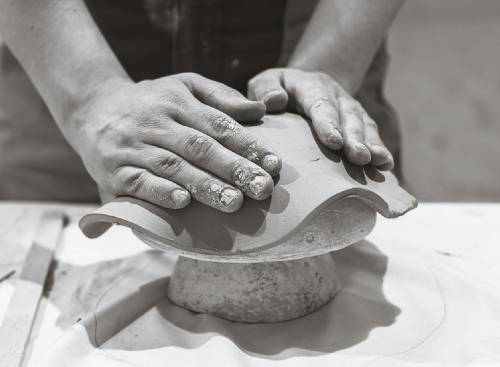
Soft slabs are often better for smaller pieces. This is because a large soft slab will bend and stretch and is harder to handle and move about without losing its shape.
Hard Slabs
Another option is to work with hard or stiff clay slabs. Stiff slabs are slabs that have been left to become leather hard.
When slabs are left to stiffen up a bit, it is easier to construct larger pieces of pottery. Stiff slabs are useful for making more angular pieces. A good example would be a large angular-shaped vase.
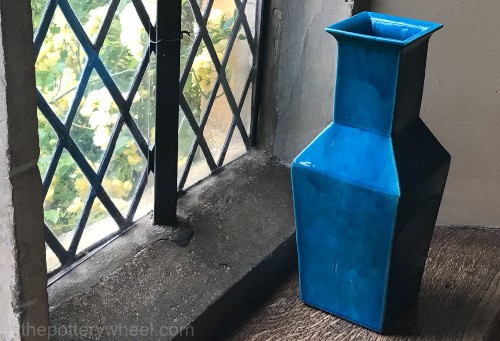
Soft leather hard can is firm and will support its own weight. But it can still be bent and curved without flopping or stretching.
Working with soft leather hard slabs has been likened to working with heavy paper or card. For example, Robison and Marsh point out that soft leather hard clay slabs will ‘bend in one direction’ but is ‘resistant to multiple curves’.
Working with clay slabs that are in the later firmer states of being leather hard is sometimes described as being architectural.
Joining Clay Slabs
A lot of the time slab pottery involves joining different slabs together. Sections of the slab will be cut out, sometimes using a template. These sections then need to be pieced together to make the vessel.
If the clay is leather hard, any joins in the clay need to be made using the slip and score method. This involves scoring into the surface of the clay with a tool like a serrated rib. Then apply clay slip to the join and press it together to make a firm bond.
Final Thoughts
On the one hand, a clay slab is simply a sheet of rolled out clay. On the other hand, it’s also a very satisfying way of making a huge range of items including mugs, vases, plates, teapots, and more. And the beauty of a well-made slab is that it can be used to make very precise well-crafted pieces with almost no equipment other than your hands, a rolling pin, and some clay.



